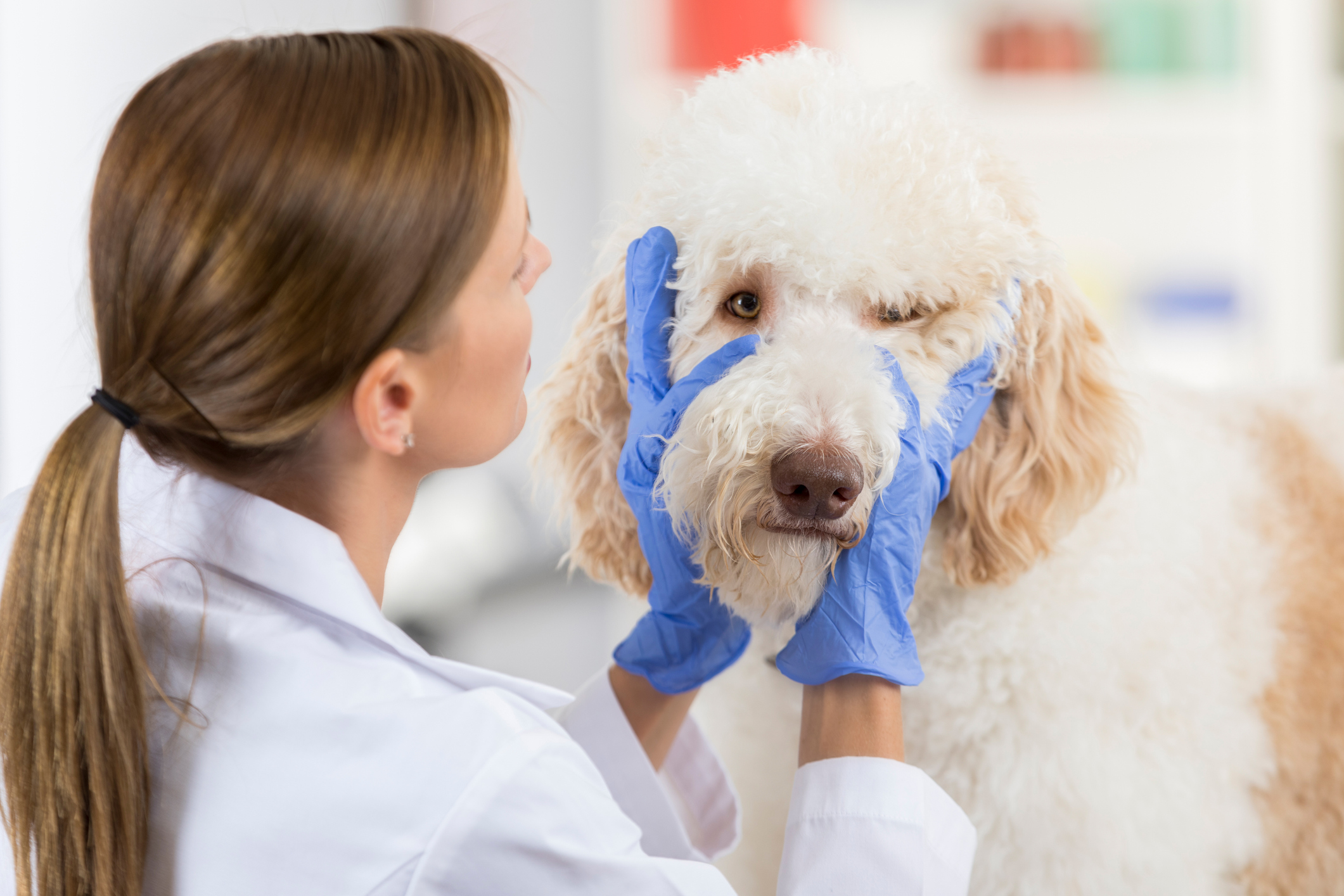
Learn How to Treat These 4 Common Eye Problems in Dogs
If you’ve ever caught a fleck of dust in your eye or accidentally touched your eyes with an irritant on your hand, you know how agonizing it can be. You might spend all day dabbing tears away, putting in eyedrops or rinsing your eye. For some, it means taking out contacts and wearing glasses for the day. A dog can’t do these things, and it’s often surprising to pet owners that, just like you, your dog can suffer from irritating eye problems.
From a fleck of dirt kicked up at the dog park to something more sinister like an infection, dogs suffer from common eye conditions, too! It’s up to pet owners to recognize them and provide their pup with a helping hand. Here’s a look at four common eye problems in dogs and what you can do to offer your pet relief from them:

1. Pink eye
Also called conjunctivitis, pink eye is a condition you’re likely familiar with—especially if you have kids. Pink eye is caused by a bacterial infection and is fairly common in both humans and dogs. The good news is, it’s highly treatable! Antibiotics will do the trick in just a few days.
The problem with pink eye in dogs isn’t treating it—it’s recognizing it. Your dog will likely have a tinge of pink or red in their eyes to some degree. Most pet owners don’t look too closely at their dog’s eyes unless they’re very red or pink. Watch out for signs that your dog’s eyes are bothering them. This can include rubbing their face on the ground, pawing at their eyes or rubbing their face against furniture. Like pink eye in humans, this condition is itchy for pups!
If pink eye goes untreated, it can get worse and cause gooey discharge in the corner of the eye. Take them to the vet right away to get antibiotics and alleviate the itchiness and pain your pup is in!
2. Scratched or damaged cornea
Grass or dirt in the eye can quickly lead to a scratched cornea, which might be very painful. Like humans who itch their eyes with their fingers, your dog will try to paw at their eyes to get whatever’s irritating them out, which leads to the scratched cornea.
In most cases, scratched corneas aren’t severe and will heal on their own. That said, it’s still smart to get medical attention for your pooch. A vet will make sure there’s no lasting damage and can prescribe antibiotics to prevent infection from taking root. And, if the damage is severe, they can recommend the right course of action for protecting it as it heals.
Keep a lookout for eye redness (usually in one eye), pawing at the eye and signs of pain or discomfort coming from your pup—alongside an unwillingness to open the eye.
3. Dry eye
Dry eye in dogs can happen for a number of reasons. Allergies are a big culprit—again, just like humans. Health conditions can also contribute to dry eyes, and if your dog is already on medication, dry eye might be a side effect. Whatever’s causing it, dry eyes can be itchy and irritating for dogs to deal with.
The biggest concern with dry eye is a scratched cornea, since your dog will likely itch their eyes with vigor. Improper lubrication by the tear ducts (Keratoconjunctivitis Sicca) also leads to redness and inflammation of the eye, which strains eyesight. It’s a very uncomfortable condition for your dog to live with—especially if it’s chronic.
Just like you’d do for your dry eyes, artificial tears (eye drops) are the solution! Do not give your dog OTC eyedrops from the store. Instead, talk to your vet and have them prescribe artificial tears made specially for dogs. Human eye drops are often medicated, which can irritate your dog’s eyes further.
4. Glaucoma
Glaucoma is a dangerous condition that can lead to lots of pain if left untreated—possibly eye removal if it gets bad enough. Glaucoma is the inability for fluid to properly drain from the eye, causing pressure buildup behind it. It manifests in the form of dilated pupils, eye cloudiness, bulging eyes or redness.
Medication and surgery can both solve glaucoma issues if they’re still mild. Each case is different, and your pup needs a thorough vet consult to gauge the severity of the condition and the options for alleviating their pain. This is also a great example of why regular checkups are so important, since most vets check for glaucoma with regularity.
Keep an eye out for problems
Most dog owners take time to stare lovingly into the eyes of their furry companions. The next time you do, take a moment to give them a cursory inspection. Do your pup’s eyes look healthy? Red? Inflamed or irritated? Are they blinking a lot? Make sure the eyes staring back at you are bright, happy and healthy-looking!


